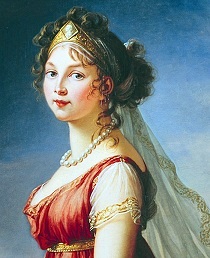The Luisenkirche (Queen Louise Church) is one of main sightseeings in Königsberg-Kaliningrad

The Queen Louise Church is worth noting as the facility that withstood both the war period and the Soviet Union reign among those noticeable buildings. This building styled by the Romanesque Revival architecture was employed as a Lutheran church founded in honor of the famous monarch in Prussia. In German, the building is known as LuisenkircheKönigsberg (Königin-Luise-Gedächtniskirche). To date, it houses the Kaliningrad Regional Puppet Theater being one of places much appreciated by the city children. If you plan to visit the Amber Region with your children, please, visit this place.
History and today’s world

As for the church, it is also rich in history. It was built within 1899 to 1901, at the turn of centuries, as per the project of the German architect Friedrich Heitmann. Unfortunately, the extensions, the houses for the priest and those receiving the rite of confirmation have been completely ruined to date. Yet, the house of worship was harmed during the war and was in ruins for quite a long time.
Glorious retrieval
In ’60s, German ruins were actively demolished in Kaliningrad. Outstanding works of architecture were destroyed posing a threat to the Queen Louise Church either. Kaliningrad was built anew. The Soviet authorities attempted to create a «communist model city», so, today modern prefabricated facilities replaced ancient villas, profitable houses and public buildings.

Upon the reconstructed, the building retained its exterior of the iconic structure as it was before the war. However, the interior was considerably changed due to re-profiling. The vaults were removed and the church hall was divided into two floors: one to hold exhibitions, another – to stage performances.
The Queen Louise Church is conditionally referred to the architectural style of neo-Renaissance since elements of this building have some features of the Normanesque and modern. The designer somewhat tried to interpret the past in the romantic patter.
The building is 47 meters in length and 22 meters in width. The watch is installed on the Main Tower. It is easy to get there. It takes 15 to 20 minutes on foot from the Victory Square considered to be the central city. The public transport runs properly. The Church is located in the Central region, the place that is least damaged during war actions. The place is known for lots of stunning buildings and streets non-damaged that retain the good spirit of old Königsberg.
Louise – the Queen of Prussia

The Queen is mostly known for her confrontation with Napoleon who sought to conquer East Prussia. The majority of significant wars was broken at the territory of the East Prussia (including the Battle of Friedland, whichis currently known as Pravdinsk of the Kaliningrad region). Her spouse, the King Frederick William was deported to Königsberg along with Louise by the French conqueror and only years after he was given the opportunity to return to Berlin. That time, he governed the remaining territories from the East Prussia.
Soon after Louise returned to the capital, she died, and in 1811 a monument was installed in Königsberg projected by the King. Later on, the Order of Louise was developed to award for special merits to females inclusively. Disputes on her personality still continue among historians but the fact that Louise was the extraordinary ruler is not under the doubt.
